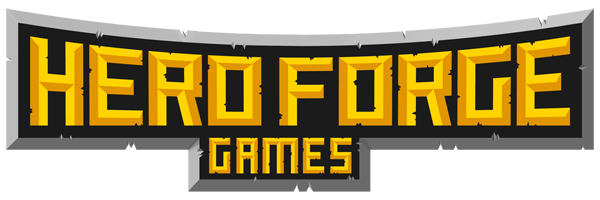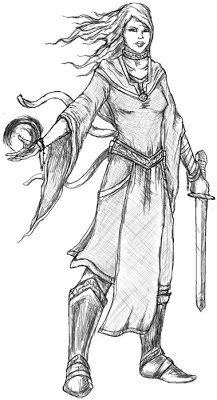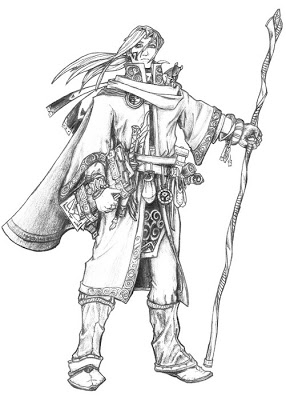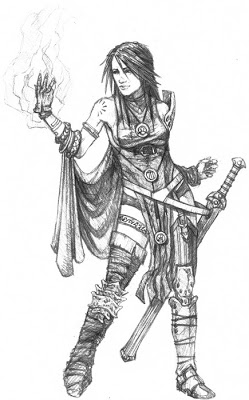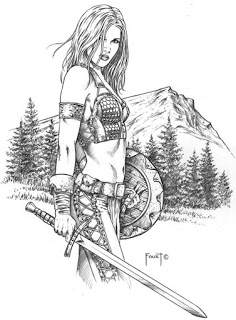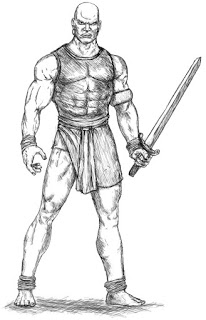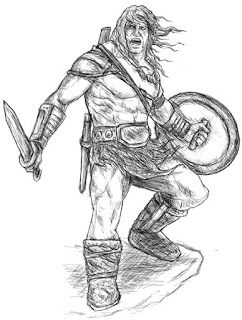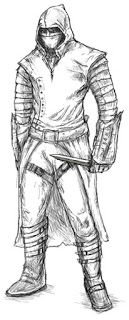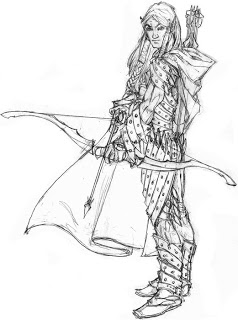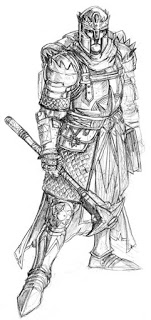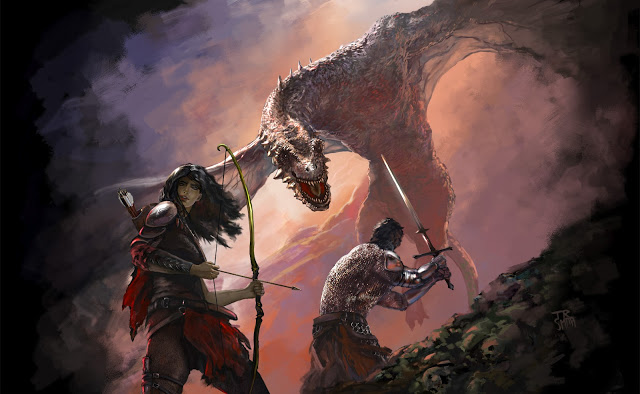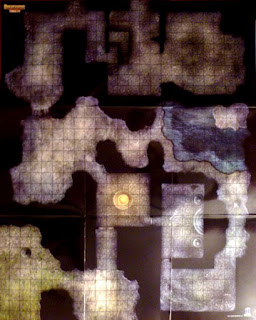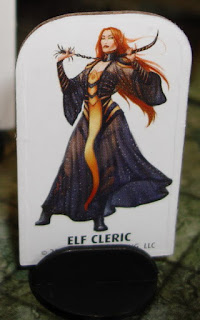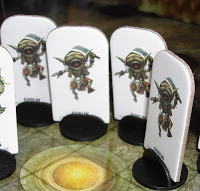Remaking Magic: Scaling Spells
In previous posts in this series I’ve listed a few examples of spells with X costs in Heroes Against Darkness, but costed scaling isn’t just limited to damage and bonuses or penalties, it also encompasses other areas like healing, manifestation, and animation.
Let’s look at some examples that demonstrate how scaling works for healing. Healing Flash has no scaling:
Healing Flash (1 Anima)
| Casting Time | Move action |
|---|---|
| Spell Effect | Heal Magic bonus HP. |
| Target | Single target |
| Attack | Magic vs. MD |
| Range | Touch or self |
Healing Touch has simple scaling, with each anima worth one dice of healing:
Healing Touch (X Anima)
| Cost | 1 anima per dice of healing. |
|---|---|
| Spell Effect | Heal Xd6 + Magic bonus HP. |
| Target | Single target |
| Range | Touch or self |
Finally, Healing Burst has heals all allies close to the caster, but the cost of the healing is 2 anima per dice of healing:
Healing Burst
(3 Anima + X Anima)
| Cost | 3 anima + 2 anima per dice of healing. |
|---|---|
| Spell Effect | Heal Xd6 + Magic bonus HP. |
| Target | All allies in effect area |
| Attack | Magic vs. MD |
| Range | Radius 5′ per ½ Level from you |
Looking at spells that cause physical manifestations, these use additional X costs in different ways. For example, Wall of Ice requires 1 anima for each 2 pillars in the wall:
Wall of Ice
(1 Anima + X Anima)
| Cost | 1 anima + 1 anima per 2 pillars of ice. |
|---|---|
| Spell Effect | You create a contiguous wall of ice made up of individual pillars (5′ x 5′, 10′ tall). Two pillars are created for each X anima spent. Corporeal creatures cannot move through the pillars or diagonally between them. No pillar can be created in an occupied position. Each pillar has 10 HP + 10 HP per ½ Level. |
| Duration | 1 rnd + 1 rnd per level |
| Range | 10′ + 10′ per level |
Whereas Fire Spirit uses the scaling cost to determine how powerful the summoned spirit is:
Fire Spirit
(6 Anima + X Anima)
| Cost | 6 anima + 1 anima per dice of damage, +5 HP and +1 to Defenses |
|---|---|
| Spell Effect | Conjures a fire spirit that engages in melee combat. |
| Effect Details | Fire spirit appears adjacent to you and occupies 5′ x 5′. You can use your move action to control the fire spirit’s actions (major and move). The fire spirit will continue to attack its target without intervention. The fire spirit’s Movement Speed is your Magic bonus. Fire spirit cannot move out of spell range. Fire spirit melee attacks target with your Magic bonus vs. target’s AD. Fire spirit deals Xd6 + your Magic bonus damage on hit. Fire spirit has 10 HP + 5 HP per X, Defenses of 15 + X. |
| Duration | 1 rnd + 1 rnd per level |
| Range | 10′ + 10′ per level |
By way of comparison, let’s take a look at the Heroes Against Darkness version of Fireball (Level 5 warlock) and the D&D version (Level 3 spell, usable by a 5th level wizard or sorcerer) of same:
Fireball
(5 Anima + X Anima)
| Cost | 5 anima + 1 anima per dice of damage. |
|---|---|
| Target(s) | All targets in effect area |
| Attack | Magic vs. ED |
| Damage | Xd8 + Magic bonus |
| Range | 10′ + 10′ per level |
| Effect Area | Radius 5′ + 5′ per ½ Level |
| Miss Effect | Magic bonus damage |
D&D Fireball
| Target(s) | All targets in effect area |
|---|---|
| Saving Throw | Reflex save for half damage |
| Damage | 1d6 per level (max 10d6) |
| Range | 400′ + 40′ per level |
| Effect Area | 20′ radius |
So there are some swings and roundabouts here, the Heroes Against Darkness version slowly scales in radius with the caster’s ½ Level bonus, whereas the D&D Fireball has a much longer range. The biggest difference is that the D&D version scales damage for free, and even when it misses it deals half damage. This means that every time a D&D caster gains a level, this spell becomes relatively cheaper and also more powerful!
When a D&D caster first gets Fireball, it deals 5d6 damage, whereas when the Heroes warlock gets the spell they can only spend 6 anima to deal 1d8 damage to all targets in a 15′ radius. For a Level 6 warlock, it deals an average of 13.5 + Magic bonus damage on a hit and 9 damage on a miss. If you hit 5 targets with Fireball, then it’ll deal about 110 damage for your 6 anima, which is a reasonable return. At Level 10, the warlock can put 11 anima into the spell, giving it 6d8 damage + Magic bonus (28 + 14) with a radius of 30′. Now, that sounds like a ton of damage (and it is), but keep in mind that at this level the warlock probably has only 18 anima before they have to use their blood anima (or Rally).
And in case you’re wondering, the base cost of Fireball comes from these components; it attacks ED (+1 anima), 10’+10′ range (+1 anima), radius 5’+5′ (+2 anima), Magic bonus miss damage (+1 anima).
The D&D Fireball at 5th level deals on average 17.5 damage on a hit and 8 on a miss. At 10th level, the same spell deals an average of 35 damage on a hit, and 17 damage on a miss. This is slightly less damage than a fully-powered Heroes Against Darkness Fireball, but by level 10 a D&D wizard or sorcerer will be able to cast three such fireballs, plus several level 4 spells and a level 5 spell.
Check out Heroes Against Darkness over at the downloads page: Heroes Against Darkness – Game Rules.
